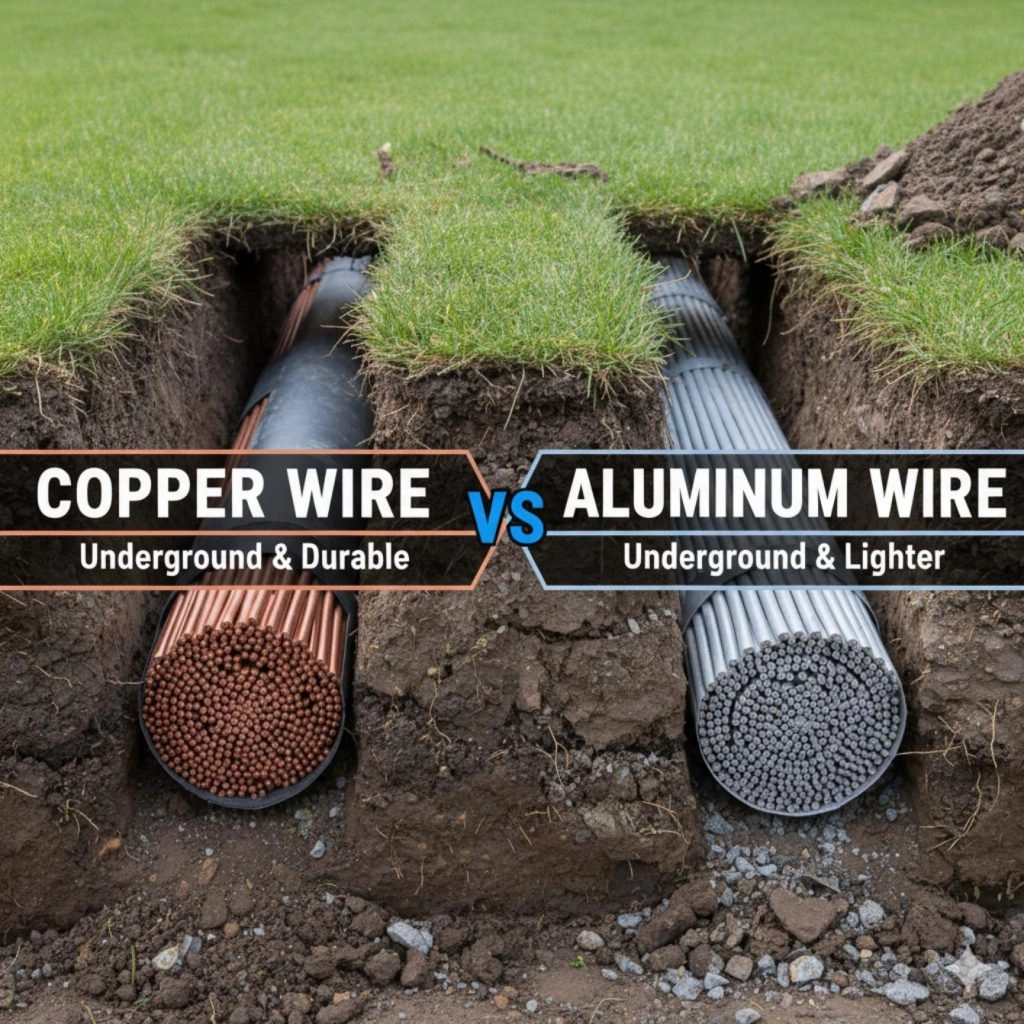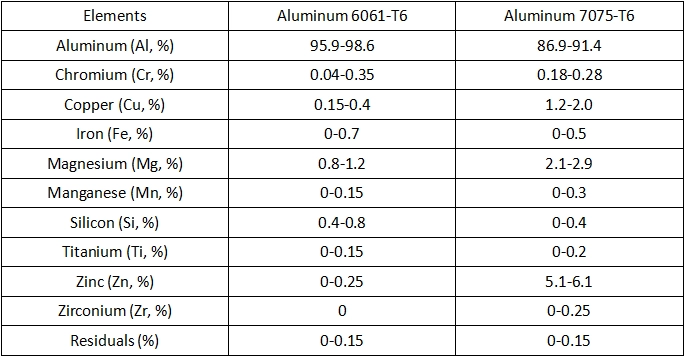Compare aluminum 6061 T6 vs T651 tempers to understand their strength, machinability, and stability for aerospace and automotive applications.
If you’re working with Aluminum 6061 and wondering whether to specify the T6 or T651 temper, you’re not alone. Both offer impressive strength and corrosion resistance, but subtle differences in processing and stress relief can make or break your project’s precision and performance. Whether you’re machining aerospace components or fabricating automotive parts, choosing the right 6061 aluminum temper is key to avoiding warping and ensuring tight tolerances. In this post, we’ll cut through the confusion and highlight exactly what sets 6061-T6 vs T651 apart—giving you the confidence to pick the best fit for your build. Let’s get into it.
Understanding Aluminum 6061 Alloy and Its Temper Designations
What Is Aluminum 6061
Aluminum 6061 is one of the most widely used aluminum alloys in the US, prized for its excellent strength, corrosion resistance, and versatility. It’s an aluminum-magnesium-silicon alloy that’s easy to machine, weld, and finish, making it a go-to choice across industries like aerospace, automotive, construction, and marine. Its balanced performance provides a good mix of mechanical properties without breaking the bank.
The Basics of Temper Designations
When you see “6061” followed by letters and numbers, like T6 or T651, those letters are temper designations. They tell you how the metal was treated after being cast to give it specific mechanical properties. Tempering usually involves controlled heating and cooling, which affects strength, hardness, and residual stress levels.
- T6 means the alloy was solution heat treated and artificially aged for maximum strength.
- T651 means it went through the same process as T6 but also underwent a stress-relieving step, often involving stretching to reduce internal stresses from fabrication.
Understanding these temper designations is key when you’re selecting aluminum 6061 for your application. It helps you balance strength, durability, machinability, and stability for your project’s needs.
Key Differences Between 6061-T6 and T651

When it comes to aluminum 6061 tempers comparison, the main difference between T6 and T651 lies in their manufacturing and heat treatment processes. Both start with the same base alloy but go through slightly different steps after extrusion or rolling.
Manufacturing and Heat Treatment
- 6061-T6: This temper is solution heat-treated and then artificially aged to reach maximum strength. It’s strong but may still have some residual stress from processing.
- 6061-T651: It starts like T6 but goes a step further with a stress-relieving process called stretching. This reduces internal stresses caused during forming, making it less prone to warping or distortion when machined or welded.
Mechanical Properties Comparison
Both tempers have similar mechanical strength:
- Tensile strength typically around 45,000 psi
- Yield strength near 40,000 psi
The T651 temper usually shows slightly better dimensional stability due to reduced residual stress, which is important in precision machining aluminum 6061 applications.
Physical and Performance Properties
- Both offer excellent corrosion resistance, good weldability, and solid toughness.
- T651 is preferred when parts need to maintain exact tolerances after machining or have to withstand additional processing without deforming.
- T6 excels in general use where maximum strength and good machinability are needed but stress relief isn’t critical.
In short, the choice between 6061-T6 and T651 comes down mostly to whether you need stress-relieved aluminum T651 for higher dimensional stability or the standard high strength of T6.
Applications and Use Cases Where T6 Shines vs When T651 Is Essential

Ideal Applications for 6061-T6
6061-T6 aluminum is a popular choice when good strength and machinability are key. You’ll find it in a lot of general-purpose parts, like aircraft structural components, automotive parts, and bike frames. Its balance of strength and ease of fabrication makes it ideal for products where weight and durability matter but tight tolerance isn’t a huge factor.
- Structural parts where moderate stress is expected
- Fabricated components and weldments
- Frames and supports in vehicles and machinery
- Consumer products requiring corrosion resistance and strength
Ideal Applications for 6061-T651
6061-T651 comes into play when the job demands lower residual stresses from processing and better dimensional stability after machining. It’s stress-relieved through a stretching process after heat treatment, reducing distortion and improving precision. Aerospace parts, missile components, and critical structural frames often call for T651 because of these properties.
- Aerospace and military-grade components
- High precision machined parts
- Structural applications where distortion control is critical
- Components requiring tight dimensional tolerances
Real-World Case Studies
In aerospace manufacturing, 6061-T651 is favored for wing and fuselage parts because it retains shape after heavy machining and stress relief. On the other hand, automotive manufacturers might choose 6061-T6 for suspension components where the balance of strength, weight, and cost is more critical than the ultra-precise machining requirements.
Understanding where each temper excels helps businesses select the right alloy for their specific needs, ensuring performance and cost-effectiveness. For more on aluminum tempers, check out our comparison of aluminum 6061 tempers.
Pros Cons and Cost Considerations
When deciding between aluminum 6061 T6 vs T651, it’s important to weigh their advantages, drawbacks, and costs.
6061-T6 Pros
- Strong mechanical properties with good strength and hardness
- Excellent machinability making it easier to work with for many projects
- Widely available and versatile for a range of applications
- Generally more affordable than T651 due to simpler processing
6061-T6 Cons
- Can retain some residual stresses from manufacturing, which might cause slight warping or distortion during machining
- Less ideal for precision applications where dimensional stability is critical
6061-T651 Pros
- Stress-relieved after heat treatment, meaning it has reduced internal stresses
- Offers better dimensional stability and less warping during machining
- Preferred in aerospace and high-precision industries where tight tolerances matter
6061-T651 Cons
- Slightly higher cost due to extra processing steps like stress relieving
- Not as common as T6, which might mean longer lead times or less availability in some markets
Cost Considerations
- T6 is often the go-to for general use and projects with budget constraints
- T651 is a smart investment when precision and stability can’t be compromised, especially in aerospace or critical structural parts
- Check ASTM B209 6061 specifications to make sure you’re getting the right temper for your needs without overspending
Understanding these pros, cons, and cost factors will help you pick the right temper, balancing performance and budget for your specific use in the US market.
Sourcing High Quality 6061-T6 and T651 from Vast
When looking to buy aluminum 6061 T6 vs T651, sourcing high-quality material is key. Vast offers a reliable selection that meets ASTM B209 6061 specifications, ensuring you get the right temper and grade for your project. Whether you need 6061-T6 for general machining or the stress-relieved 6061-T651 for precision parts, Vast stocks both in plate and sheet forms.
Here’s why choosing Vast makes a difference:
- Certified Quality: All aluminum parts meet industry standards, so you’re guaranteed consistent mechanical properties.
- Variety of Sizes: From thin sheets to thick plates, Vast’s inventory covers your needs.
- Trusted Suppliers: Materials come from top mills, reducing risks of residual stress issues common in aluminum alloys.
- Competitive Pricing: You get accurate pricing with no hidden fees, helping you budget right.
- Fast Shipping: Domestic distribution centers across the US mean quicker delivery times.
If you want precision machining aluminum 6061, especially for aerospace aluminum alloy selection or any high-demand application, Vast is a solid go-to. Their stock includes both 6061 plate vs sheet tempers, letting you pick exactly what fits your job.
In short, buying from Vast means you’re backing your project with proven quality and reliable supply—important for producing consistent parts whether you’re working with 6061-T6 or 6061-T651.